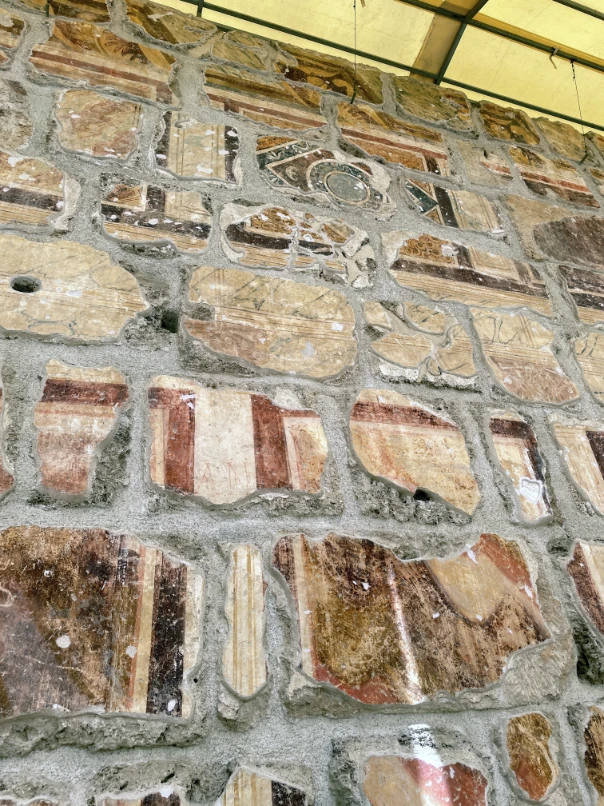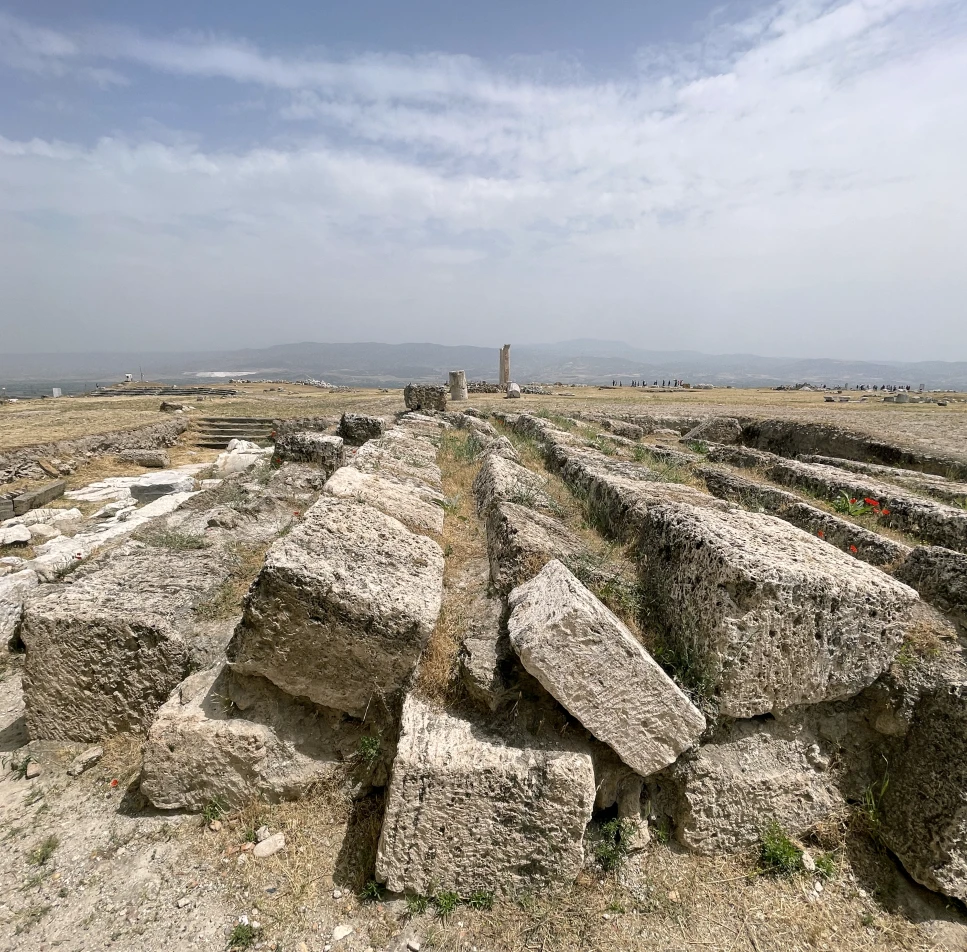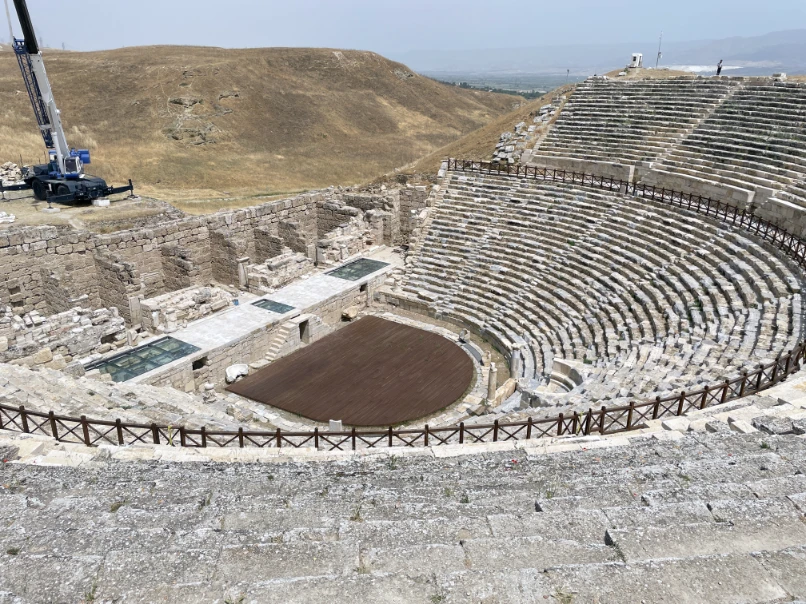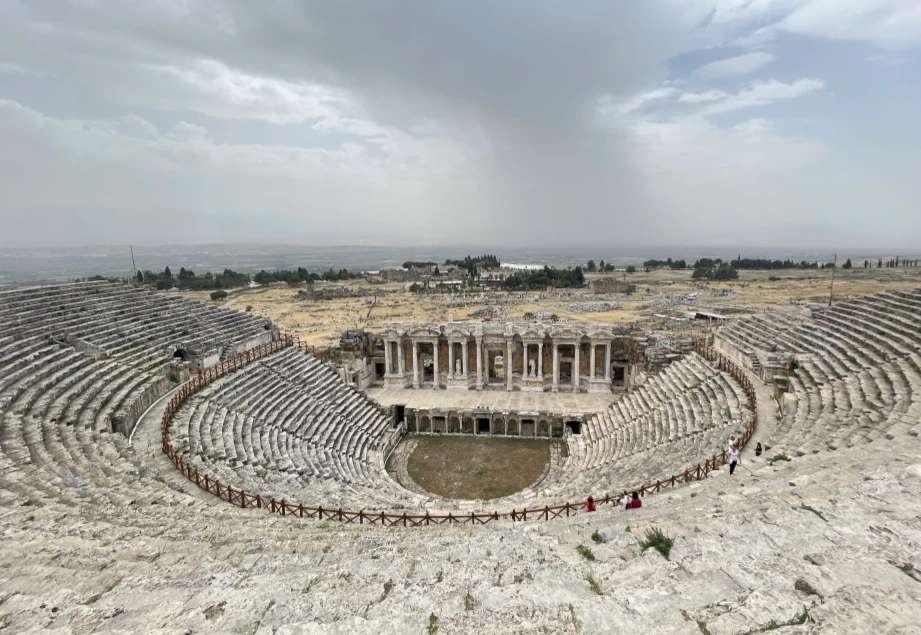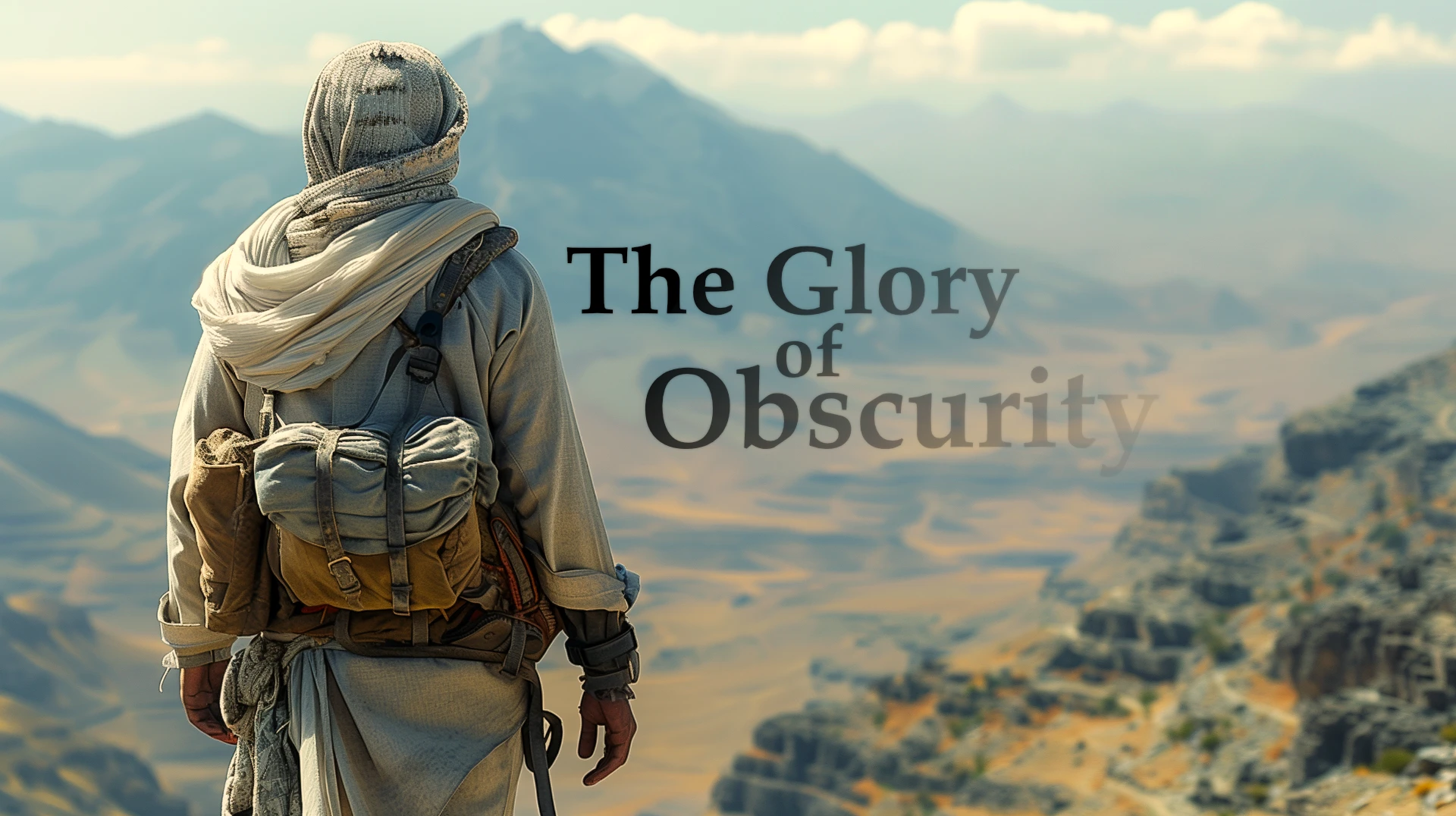Many of us work tirelessly to leave our mark on human history, driven by the awareness of our fleeting mortality. As we observe our friends and family age, retire, and finally pass away, we yearn to do something significant, something that ensures our name and impact live on. By studying early Christians, we can gain valuable insights to guide us today.
Atop a prominent hill in Turkey lie the ruins of Laodicea, a city that offers a fascinating study in contrasts. One striking contrast is between a beautiful, partially reconstructed wall adorned with exquisite designs while scattered stone blocks lie further on, victims of earthquakes and the relentless passage of time. Another contrast can be seen in the city’s two amphitheaters. On the west side, a massive, reconstructed amphitheater is embedded into the hillside, while on the north side, a second amphitheater remains largely unexcavated. Beside this second amphitheater stands a partially reconstructed church house, likely a memorial to a wealthy family who converted to Christianity. The non-east orientation of the attached worship area and an early Christian symbol near the entrance indicate its adaptation for Christian purposes.
In stark contrast to this humble church house, the grand and awe-inspiring church of Laodicea stood nearby. Despite the city’s wealth and prominence, God’s message to the believers of this church was clear: recognize your true condition. They were wretched, miserable, poor, blind, and naked—but everything they thought they were, they were not. Their self-confidence and perceived success masked a deeper, more insidious disconnect from God. Their confidence lacked true conversion, and this condition had grown contagious. The result? God would spit them out.
Just down the road lies another famous city, Hierapolis. Here, an enormous amphitheater bears witness to the orations and plays that once captivated its people. Below it, hot springs expel calcium-rich water, giving the entire mountainside a snow-white appearance. People flocked to this area in the hope of healing, fully aware of their condition, only to leave disappointed.
High above, on the rocky green mountainside, rest various scattered sarcophagi. Among these remnants of an ancient graveyard, we stumbled upon a small tomb purported to be the final resting place of “St. Philip.” Whether it was Philip the Apostle or Philip the Deacon, the story tells of his torturous death—crucified upside-down for the message he preached. The relative obscurity of this tomb is fitting, for these early disciples of Jesus lived not for self-aggrandizement but to be forgotten—if only Christ might be known throughout the world. By giving up their lives for the cause of Christ, they shared the good news of eternal life with those who had it not.
Perhaps that’s the point. To live not to be remembered, as though we will not rise again, but to make His name unforgettable because He did and will come again to remember and bring forth the forgotten.
